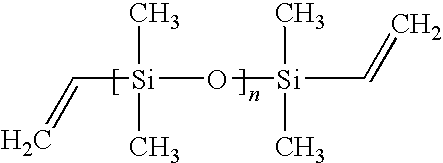Optically Clear Biofouling Resistant Compositions and Methods for Marine Instruments
a composition and composition technology, applied in the field of marine instruments, can solve the problems of affecting the data acquisition, affecting the performance of marine instruments and sensors, and affecting the maintenance cost of instruments, and achieves excellent long-term biofouling resistance properties, good adhesion to the substrate, and coating durability
- Summary
- Abstract
- Description
- Claims
- Application Information
AI Technical Summary
Benefits of technology
Problems solved by technology
Method used
Image
Examples
example 1
[0091]For the case of instrument housings, gliders and similar platforms, special care is taken to coat the areas where sections of housing are joined together with o-ring connections or have installed end caps with o-ring sections. FIG. 1 illustrates biofouling in o-ring jointed seams 10 of multi-component instrument housing 20. In order to protect these areas from biofouling settlement and to ensure that the applied fouling release coating does not flow into the o-ring sealed area where it could disrupt the sealing mechanism, the following method of coating is implemented. A layer of clear plastic tape is applied to cover the o-ring bearing seams joining two pieces of the instrument housing. To equalize the pressure across the tape, a hole or holes is made on the tape. The anti-fouling coating is then applied over the tape in accordance with the teachings of the present invention. The circular circumference, joining two pieces of the instrument housing as described have a layer of...
PUM
| Property | Measurement | Unit |
|---|---|---|
| Fraction | aaaaa | aaaaa |
| Fraction | aaaaa | aaaaa |
| Fraction | aaaaa | aaaaa |
Abstract
Description
Claims
Application Information
 Login to View More
Login to View More - R&D
- Intellectual Property
- Life Sciences
- Materials
- Tech Scout
- Unparalleled Data Quality
- Higher Quality Content
- 60% Fewer Hallucinations
Browse by: Latest US Patents, China's latest patents, Technical Efficacy Thesaurus, Application Domain, Technology Topic, Popular Technical Reports.
© 2025 PatSnap. All rights reserved.Legal|Privacy policy|Modern Slavery Act Transparency Statement|Sitemap|About US| Contact US: help@patsnap.com



